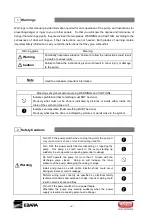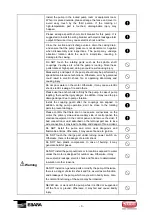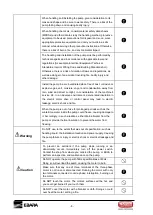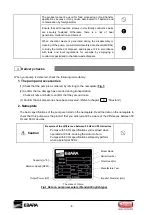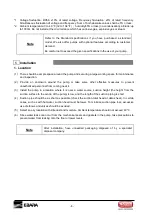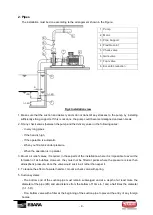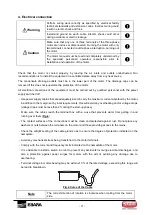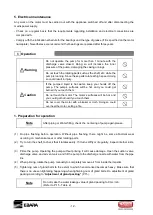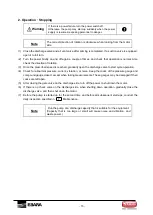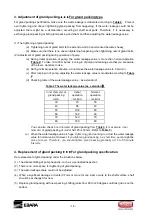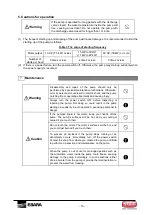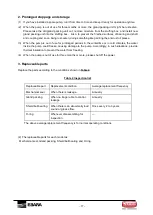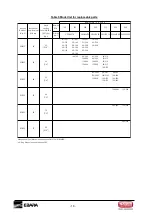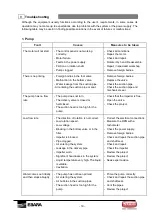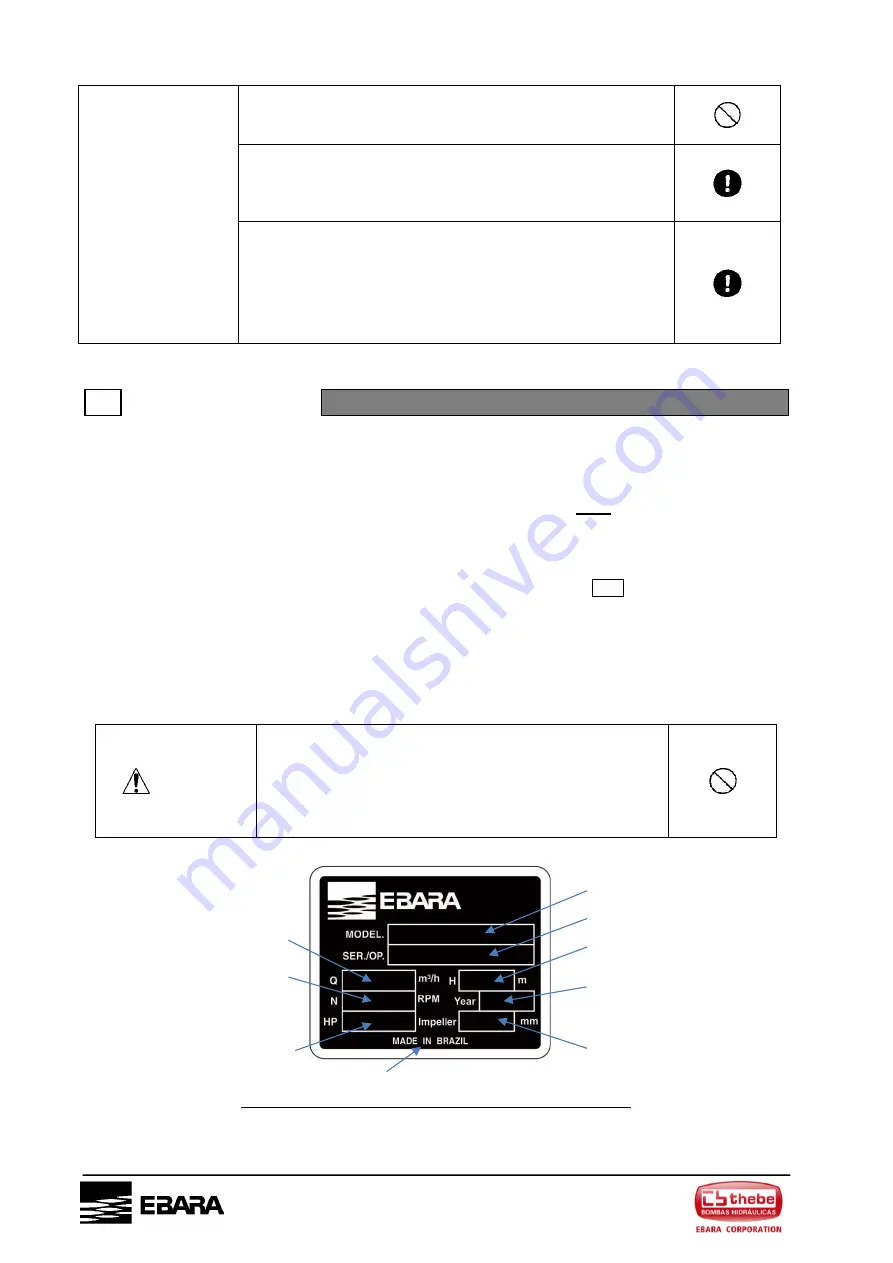
- 6 -
The product cannot be used for food processing or food transfer
applications because it may cause development of bacteria and
contamination by foreign matter.
Ensure that all connection screws in electrically conductive parts
are securely fastened. Otherwise, there is a risk of heat
generation, malfunction and burnout.
When chemical waste is generated during the disassembly or
cleaning of the pump, consult material safety data sheets (MSDSs)
to study the method of disposal, and dispose of it in accordance
with laws and local regulations, for example by employing a
contractor specialized in chemical waste disposal.
3
Delivery checks
When your pump is delivered, check the following immediately.
1. The pump and accessories
(1) Check that the pump is as ordered, by referring to the nameplate (
Fig.1
)
(2) Confirm that no damage has occurred during transportation.
Check all nuts and bolts to confirm that they are not loose.
(3) Confirm that all accessories have been delivered. (Refer to chapter 9
“Structure”)
2. Nameplate
The basic specifications of the pump are listed on the nameplate. Read the data on the nameplate to
check that this pump was the product that you ordered and be aware of the differences between 50
Hz and 60 Hz devices.
Caution
Be aware of the differences between 50 Hz and 60 Hz devices.
・
Pumps with 50 Hz specifications will overload when
operated at 60 Hz, causing the motor to burn.
・
Pumps with 60 Hz specifications will poorly perform
when operated at 50 Hz.
Fig.1 Data on pump nameplate (Standard English type)
The place of Origin
Capacity [m
3
/h]
Rotation Speed [RPM]
Output Power [HP]
Manufacture Year
Serial Number
Total Head [m]
Impeller Diameter [mm]
Model Name


